We explore the Jurassic Period, and discuss its characteristics and divisions. In addition, we describe its climate, flora and fauna.
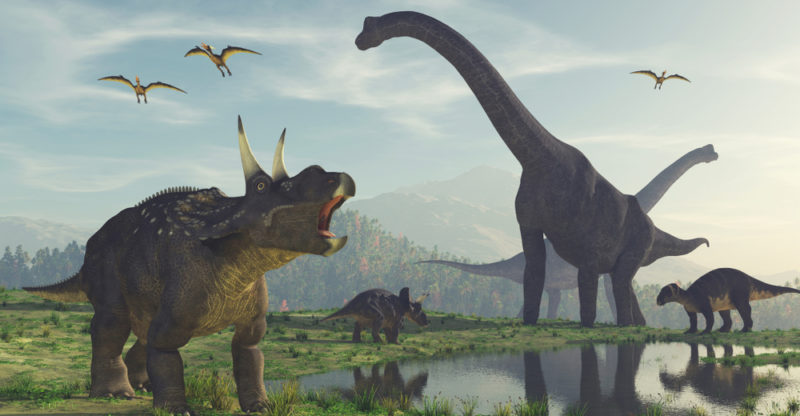
What is the Jurassic Period?
The Jurassic is the second of the three periods of the Mesozoic Era, which spanned from 248 to 65 million years ago. The Jurassic succeeds the Triassic and precedes the Cretaceous Period.
The Jurassic began 206 million years ago and ended 145 million years ago, spanning a total interval of 61 million years. During this period, dinosaurs thrived and dominated life on Earth, which is probably why it is the best known of the periods that make up the Mesozoic Era.
During the Jurassic Period, the definitive breakup of Earth’s single supercontinent Pangea began, and the continents began drifting to their current positions. Furthermore, this period witnessed the formation of various inland seas and large bodies of water, such as the Atlantic Ocean.
The term Jurassic is derived from the name of the Jura mountain range, located on the border between France and Switzerland, where French geologist Alexandre Brongniart discovered the earliest fossils from the period. He is also credited with having organized this geological system in the 19th century.

- See also: Tertiary Period
Characteristics of the Jurassic Period
The main characteristics of the Jurassic are:
- It began 206 million years ago and ended 145 million years ago.
- Dinosaurs rose and evolved during this period of geological history.
- The definitive breakup of Pangea began.
- The climate was predominantly warm and humid.
- The first birds and mammals appeared.
- Rainforests flourished during this period.
- Large predators populated the seas.
Division of the Jurassic Period
The Jurassic Period is divided into three epochs or series comprising different ages or stages:
- Lower or Early Jurassic. It began about 201.3 million years ago and ended 182.7 million years ago. It is divided into the Hettangian, Sinemurian, Pliensbachian, and Toarcian ages.
- Middle Jurassic. It began around 174.1 million years ago and ended 166.5 million years ago. It is divided into the Aalenian, Bajocian, Bathonian, and Callovian ages.
- Upper or Late Jurassic. It began around 163.5 million years ago and ended 152.1 million years ago. It is divided into the Oxfordian, Kimmeridgian, and Tithonian ages.
Geology of the Jurassic Period
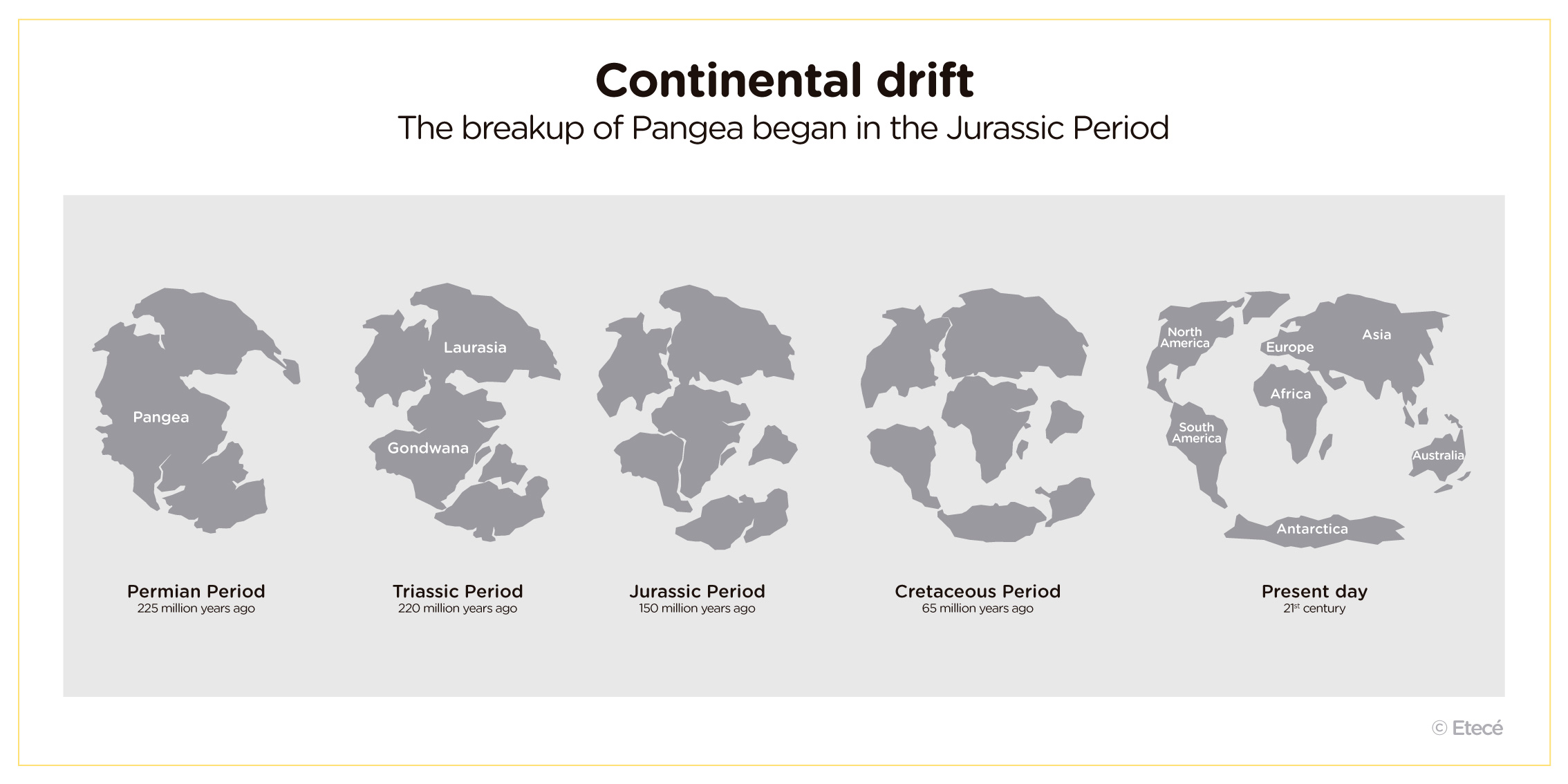
The most significant geological event of the period and of the entire Mesozoic Era is the beginning of the breakup of the supercontinent Pangea, which initially split into two parts:
- Laurasia. The northern part, which eventually broke up into North America, Europe, and Asia.
- Gondwana. The southern part, which began to rift in the Middle Jurassic, giving rise to Antarctica, Madagascar, India, Australia, Africa, and South America.
The fragmentation of Laurasia into North America and Europe caused the formation of the Atlantic Ocean and the Mid-Atlantic Ridge, a large volcanic mountain range that lies on the floor of the Atlantic. The Jurassic also saw the origin of the Gulf of Mexico in North America and the Jura Mountains in France and Switzerland, which gives its name to the period.
Climate of the Jurassic Period
The climate of the Jurassic was predominantly subtropical, with high temperatures and abundant rainfall spreading across much of Earth. With the beginning of continental breakup, the interior deserts of Pangea became more humid, and a large part of the planet became covered with tropical and subtropical forests.
During the Jurassic, temperature gradients were much more uniform than they are today, meaning that the climate did not vary markedly according to latitude. Since continental landmasses lay far from the poles, there is no evidence as to the existence of large expanses being covered with ice during this period.
The sea level would have been higher than it is at present, allegedly due to high temperatures, and therefore many coastal regions would have been submerged under water.
Flora and fauna of the Jurassic Period
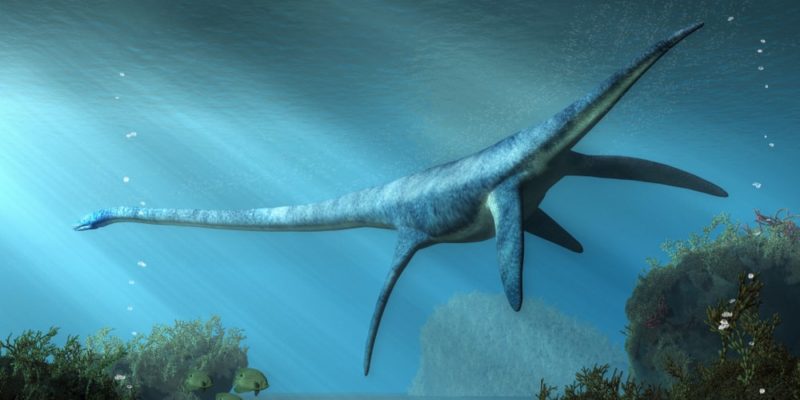
Animal life flourished during the Jurassic, supported by geological and climatic changes that favored greater diversity of fauna and flora.
Dinosaurs spread significantly on the continents. Velociraptors, Diplodocus, and Brachiosaurus were among the most common species. Carnivorous as well as herbivorous dinosaurs found niches to feed on, reproduce, and thrive. The oceans were home to reptiles like ichthyosaurs and plesiosaurs, and other aquatic species such as ammonites and mollusks.
In terms of flora, the Jurassic was a fairly green period in comparison to the much less humid preceding geologic time-span. The rise in humidity levels and the warm climate supported the spread of vegetation across the new subcontinents. Deserts turned into more humid areas, and became covered with forests, rainforests, and jungles.
Most forests consisted of conifers, similar to present-day pines and Araucaria. There were different species of palms and ferns, ginkgos, and horsetails, though no types of flowers or fruits still existed in this period.
Rise of birds
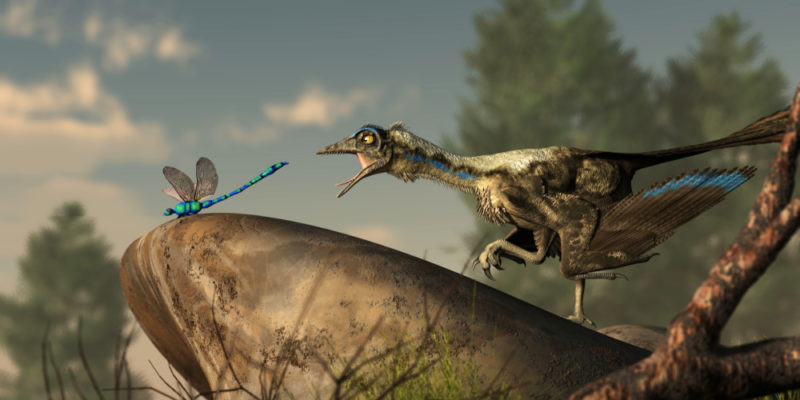
During the Jurassic, the skies were dominated by featherless Pterodactylus. Primitive insects were much larger than those found today due to increased levels of oxygen in the atmosphere.
The end of the Jurassic saw the emergence of primitive birds including the Archaeopteryx, whose fossils made it possible to ascertain that birds descend from dinosaurs. Archaeopteryx had feathers and wings, but also reptilian traits, like claws on its wings and teeth in its beak, thus sharing characteristics with both birds and dinosaurs. The fossil of this animal was discovered in Germany in the 19th century and has been a subject of study and debate among scientists due to its unique position in evolutionary history.
The first mammals
The mammals that lived in the Jurassic were generally small in size and occupied a small ecological niche in ecosystems. This means that, due to the extraordinary number and variety of predators existing at the time, they were unable to thrive and spread. They tended to be nocturnal and are believed to have been primarily insectivorous.
Though small in size and not dominant in number and diversity, these early mammals marked the beginning of an evolutionary journey that continued during the Jurassic with the rise of more diverse and evolved groups. Nevertheless, it would be in later periods that mammals would thrive and spread.
The Jurassic Period in fiction
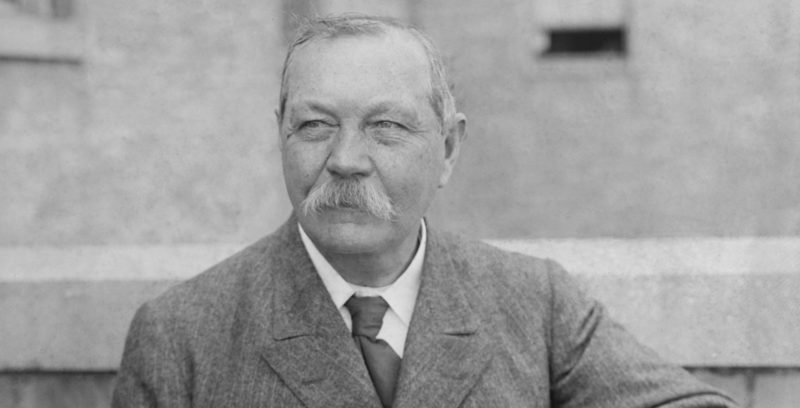
Among the fiction that makes reference to the Jurassic or the animals that lived during this period are:
- The fiction novel The Lost World by Scottish writer Arthur Conan Doyle, published in 1912 and set in the Venezuelan Amazon, where prehistoric species would have survived.
- The science fiction novel Jurassic Park by American author Michael Crichton, published in 1990, as well as its 1995 sequel The Lost World, which are about the installation of a theme park on an island in Costa Rica, where dinosaurs cloned from DNA found in a mosquito preserved in amber are exhibited.
- The movie saga inspired by Crichton's novels, including: Jurassic Park (1993); The Lost World: Jurassic Park (1997); Jurassic Park III (2001); Jurassic World (2015); Jurassic World: Fallen Kingdom (2018), and Jurassic World: Dominion (2022).
Explore next:
References
- Ferrando Castro, M. (2018). ¿Qué fue la extinción masiva del Triásico-Jurásico?. Red Historia. https://redhistoria.com/
- Mundo Prehistórico. (s.f.). Fauna del Jurásico. Los dinosaurios. https://www.mundoprehistorico.com/
- National Geographic. (2010). Período Jurásico. https://www.nationalgeographic.es/
- Tarbuck, E. y Lutgens, F. (2005). Ciencias de la Tierra. Una introducción a la geología física. Pearson Educación.
Was this information useful to you?
Yes NoThank you for visiting us :)